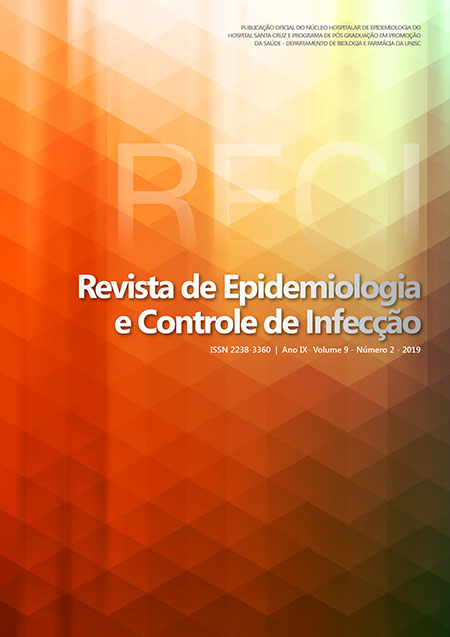A segurança do paciente no contexto das flebites notificadas em um hospital universitário
DOI:
https://doi.org/10.17058/reci.v9i2.12099Resumo
Justificativa e Objetivos:A flebite pode levar à necessidade de intervenções assistenciais de maior complexidade, como a utilização de antibioticoterapia ou até uma intervenção cirúrgica, além de prolongar a internação do paciente e aumentar o custo e risco de infecções. O presente estudo visa descrever as flebites notificadas em um hospital universitário e assim contribuir com possíveis ações de melhoria na qualidade do cuidado e na segurança do paciente. Métodos:Estudo observacional de caráter retrospectivo desenvolvido em três unidades de internação de um hospital universitário do município de Vitória, ES, Brasil. No período de junho a agosto de 2017 foram analisados os prontuários de 76 pacientes, a partir das notificações de flebite registradas por um software eletrônico. Também foram coletadas informações sobre as condições sociodemográficas e clínicas dos pacientes e as relacionadas aos registros de enfermagem. Os dados foram tabulados em planilha do Microsoft Office Excel2007 e analisados pelo programa de estatísticaStatistical Package for the Social Sciences 22(SPSS 22). Resultados: Identificou-se que 56,4% das flebites ocorreram em homens, faixa etária entre 41 e 65 anos (42,3%) e 46,1% dos pacientes fizeram uso de antibióticos. Houve registro da conduta adotada em 59,2% dos casos, e as mais realizadas foram compressas de gelo (44,7%) e elevação do membro (34,2%). Conclusão:O conhecimento acerca das características das flebites notificadas propicia o entendimento e a minimização deste evento adverso, a fim de estabelecer as condutas de prevenção e diminuição do risco e da incidência. Descritores:Flebite. Segurança do Paciente. Cateterismo Periférico. Cuidados de EnfermagemDownloads
Downloads
Publicado
Como Citar
Edição
Seção
Licença
The author must state that the paper is original (has not been published previously), not infringing any copyright or other ownership right involving third parties. Once the paper is submitted, the Journal reserves the right to make normative changes, such as spelling and grammar, in order to maintain the language standard, but respecting the author’s style. The published papers become ownership of RECI, considering that all the opinions expressed by the authors are their responsibility. Because we are an open access journal, we allow free use of articles in educational and scientific applications provided the source is cited under the Creative Commons CC-BY license.


